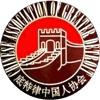
Overseas Chinese organizations, whether they are family associations, dialect or clan associations, serve a crucial role in the ethnic Chinese community. They provide a semblance of the traditional family structure that overseas Chinese must adopt when they are far away from their biological families.
They were often the main source of political and socio-cultural activity in overseas Chinese communities, as well as a source of income and power for many ethnic Chinese. They were also the target of brutal oppression and repression throughout much of the twentieth century.
Purdue University Undergraduate Chinese Association
The Purdue University Undergraduate Chinese Association (PUCCA) is a student-run organization dedicated to the study of Chinese language and culture. The PUUCA mission is to promote the Purdue University culture and heritage through various programs and activities.
The Chinese program in the Department of Modern Languages, Literatures and Cultures offers a broad range of courses that provide students with a thorough foundation in both the Chinese language and literature as well as a critical awareness of the historical and cultural diversity of contemporary China. Interested students can also take advantage of related offerings in departments across the College of Arts and Sciences.
The major is designed to equip students with a comprehensive knowledge of Chinese language and culture, which is necessary for success in a wide variety of professional settings. It combines language studies with an exploration of Chinese culture, literature, religion and philosophy. In-country experience is an integral part of the program, as is exposure to a variety of study abroad opportunities.
Nebraska Chinese Association
Founded in 2008, the Nebraska Chinese Association (NCA) promotes cultural diversity and enrichment in the Omaha area. NCA works closely with Chinese Students Associations at Creighton University, University of Nebraska Medical Center and the Confucius Institute at the University of Nebraska Lincoln, as well as with Asian Employee Networks at several local corporations.
In the mid-1800s, when hundreds of Chinese immigrants came to America without resources or knowledge of American culture and customs, family associations based on Chinese regional districts or dialects and last names formed to support them. These organizations were known as benevolent associations.
One of these benevolent associations was the On Leong Tong, which had been in Omaha since 1908. In May 1910 the Bee noted that there were three tongs in town. However, the “On Leong tong dominates the city.”
National Association of Chinese-Americans
The National Association of Chinese-Americans (NCAA) was formed in 1923 and is a nonprofit organization that promotes cultural education, civic engagement and social justice. Among its goals are to ensure equal access to education, healthcare, and employment opportunities for Chinese Americans.
The NCAA also helps local governments and other institutions serve the needs of the Chinese American community. In addition, it advocates for Chinese immigration and migrant labor rights.
It is important to note that although the Civil Rights Act and Immigration and Nationality Act helped to put the Chinese-American community at a higher level of social and economic status, discrimination still existed in many areas.
In order to meet the growing social needs of the community, the ACA began a drop-in service center in 1989. The center was able to obtain State funding in order to provide services for the elderly residents of the Cass Chinatown area.
China Association for Quality
During the past few decades, Chinese higher education has made significant progress in developing and improving its quality. Its focus is on satisfying the social demand for talents, adapting to economic transformation and growth, and guiding creativity.
To this end, China’s higher education development has gone through a number of reforms. Among these are a series of measures to improve the teaching quality and strengthen the quality control in schools.
These improvements have helped students to get the most out of their time in college and graduate with the best possible skills, qualifications, and attitudes toward learning. They have also contributed to the development of a high-quality teaching culture and the cultivation of an innovative spirit.
In August 2004, the Ministry of Education formally established the Higher Education Evaluation Center (HEEC). As a national author-ity for quality assurance, it is responsible for multi-level evaluation, accreditation, regular monitoring of educational quality data and consultation services nationwide. It has a unique “five-in-one” evaluation system which includes self-evaluation of HEIs, institutional evaluation (including eligibility evaluation and audit), program accreditation, regular monitoring of educational status data, and international evaluation.
